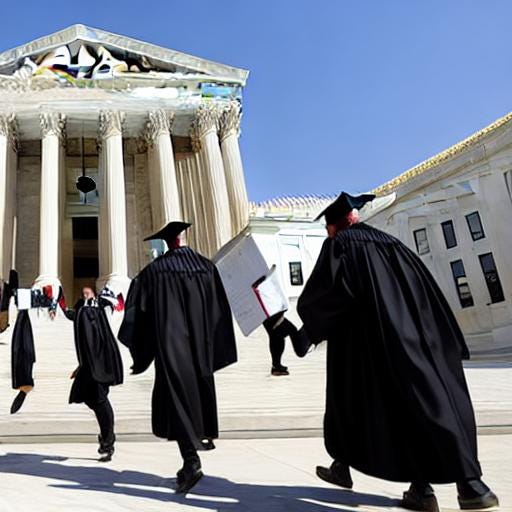Higher Ed Spending Problem Demands Attention No Matter Court’s Opinion
Note: Scott Pulsipher, president of Western Governors University, and I published this piece on Forbes two days before the Supreme Court overturned President Biden’s student loan forgiveness plan, as the majority said that it exceeded the authority Congress delegated to the executive branch. As I’ve made clear in past writings, this was both my expectation of what would happen and my personal belief of what should happen. But more broadly, regardless of the ruling, the central message in the piece that Scott and I wrote in Forbes—about the spending problem on the part of colleges and universities—is a critical one with which those in higher ed must wrestle. Our piece is below.
With the Supreme Court expected to announce its ruling on the legality of President Biden’s student loan forgiveness plan tomorrow, debates around who should pay for the country’s crippling level of student debt—amounting to more than $1.7 trillion—continue to flood the national discourse. What’s less discussed, however, is how we got here in the first place, and what would need to change to avoid imposing immense financial hardship on yet another generation.
Policy analysts can point to shifts in state funding, government subsidies, and myriad other reasons for the escalating price of college, but this issue is fundamentally one of costs—the overall expenditures associated with delivering the educational experience—not price. Higher ed has long been on an unsustainable cost trajectory, and everyone—students, the government, society—bears that cost.
Looking at graphs of the rising costs of college is like watching a snowball gain size as it rolls downhill. In 1970, for example, public colleges and universities spent nearly $104 billion in today’s dollars. That number rose to $190 billion by 1990; $296 billion by 2010; and a whopping $420 billion by 2020.
Altogether, post-secondary institutions now spend more than $670 billion per year—yet interestingly, four-year public and other private nonprofit colleges devote just one third of their total spending on course delivery and instruction. This raises the question: what is driving the rest of this spending? And what tradeoffs are needed now to bend the arc of the cost curve?
Higher education, it turns out, has been engineered beyond what should be its primary objective of arming students with the knowledge and skills needed to build better lives and careers. Instead, many institutions have taken on tasks that were designed originally to provide value, but eventually took on a life of their own. In effect, these institutions have lost their clarity of purpose in pursuit of a multiplicity of competing missions. The result? Complex, costly educational models.
Higher education must get back to the fundamentals. With the eyes of the nation upon them, leaders of colleges and universities must consider which activities actually contribute directly to student success and come to terms with two realities.
The “Hollywood” version of college is increasingly irrelevant for America’s diverse talent.
Keep reading with a 7-day free trial
Subscribe to The Future of Education to keep reading this post and get 7 days of free access to the full post archives.





